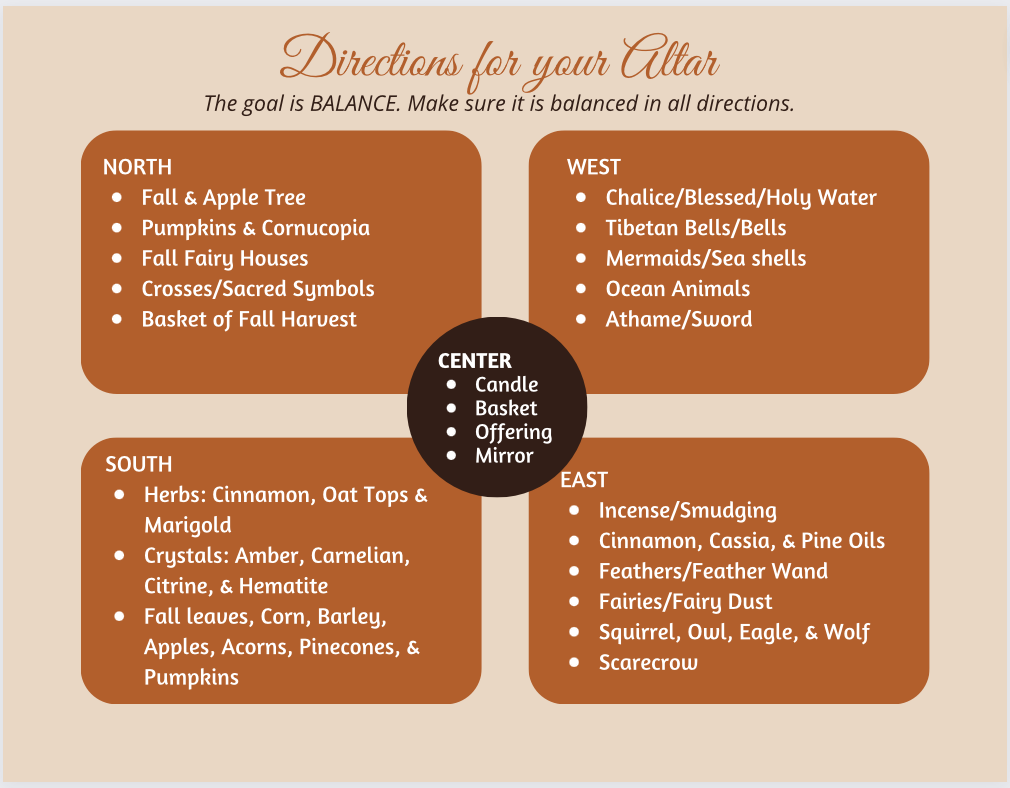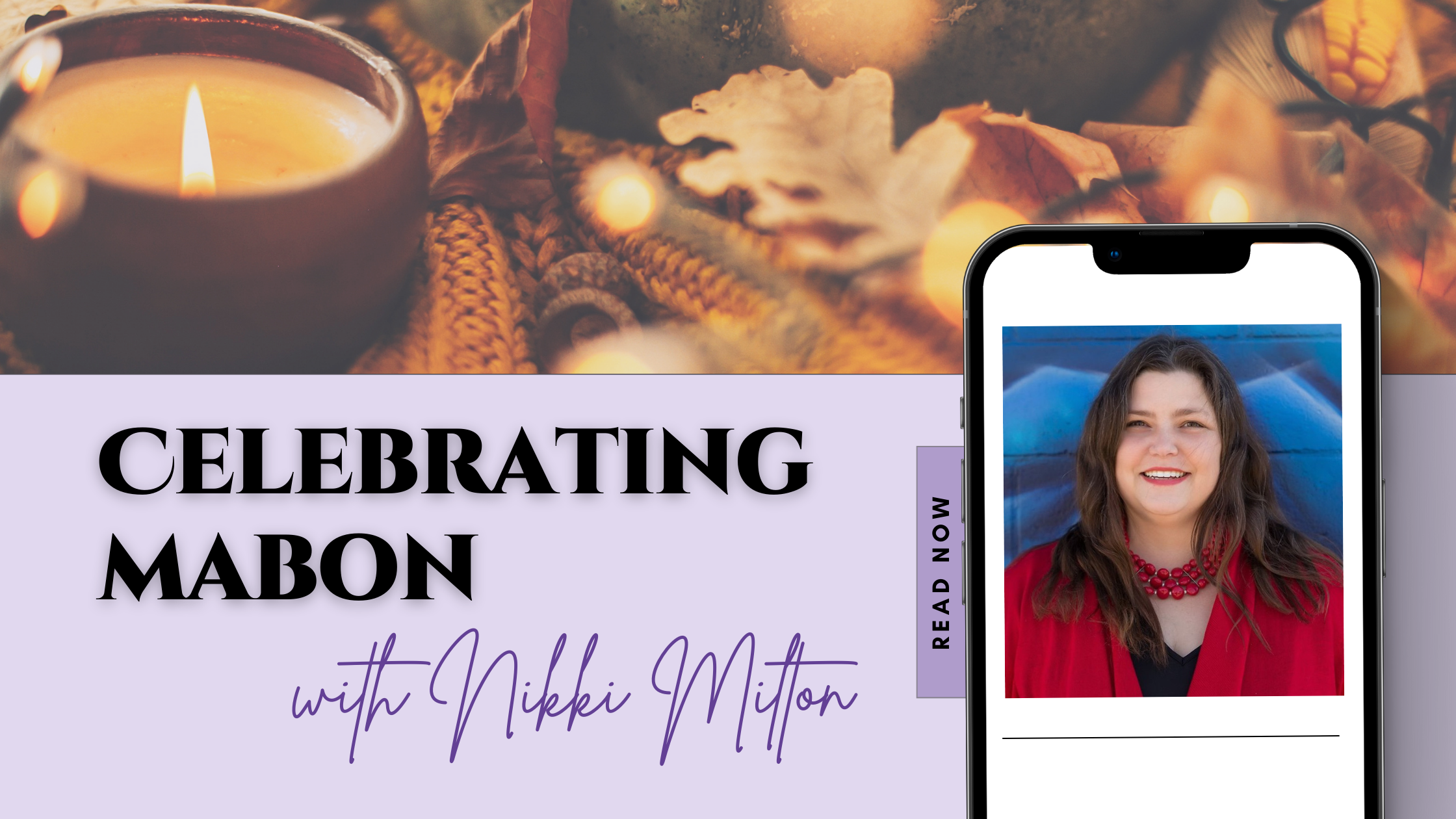Mabon, or the Autumn Equinox, is a time to connect with nature and the cycles of the Earth, and it’s often seen as a time of balance and reflection, just as the day and night are in balance during the equinox.
Many ancient cultures followed the cycles of nature and the changing of the seasons to mark time and to understand the world around them. The four seasons represent different aspects of daily life and were often, but not always, associated with different gods or goddesses.
In many traditional societies, seasonal changes were linked to agricultural cycles, and the planting and harvesting of crops were timed according to the rhythms of nature. In some cultures, the changing of the seasons was marked with ceremonies and rituals that expressed their gratitude for an abundant harvest and honored the gods and goddesses of the earth and sky.
In many indigenous cultures around the world, the changing of the seasons was also marked with ceremonies and rituals that honored the natural world and its cycles. These traditions often emphasized the interconnectedness of all life and the importance of living in harmony with nature.
What is Mabon?
Mabon is a time to celebrate the changing of the seasons and give thanks for the abundance of the harvest. It’s a time of balance and reflection when pagans often engage in various rituals and activities to honor the earth’s bounty, express gratitude, and prepare for the colder months ahead.
What is the Wheel of the Year?
The Wheel of the Year is a modern pagan concept that represents the cyclical nature of time. It is a symbolic representation of the eight major festivals that mark the changing of the seasons throughout the year.
The Wheel of the Year is divided into two halves, each representing the light and dark halves of the year. The first half begins with the winter solstice, which marks the longest night of the year, and continues through the spring equinox and the summer solstice. The second half is the late summer and harvest seasons from the summer solstice, back to the beginning with the winter solstice.
I like to think of the Wheel of the Year festivals as the perfect complement to the celebration of the moon phases. The moon cycles are more feminine in nature, whereas these are sun festivals – the perfect masculine balance to our monthly moon rituals and ceremonies.
As sun festivals, all eight celebrations incorporate enjoying the perks of fire – whether it’s a bonfire or a candle, enjoying a feast with loved ones, and getting outside in nature.
Tell Me More About Mabon
Mabon is a time of reflection on the balance between light and darkness as well as the changing seasons. It’s a time to recognize that as the days grow shorter, there is still beauty and abundance in the world. Symbolically, it represents the second harvest, as many crops are ready for gathering during this time.
Mabon and the Autumn Equinox are often used interchangeably, and in many neopagan and Wiccan traditions, they are celebrated in similar ways because Mabon is essentially a name for the Autumn Equinox within these traditions.
In pagan tradition, Mabon is similar in theme to our modern Thanksgiving tradition – taking the abundance of the harvest and celebrating in gratitude together for all of the current year’s blessings.
Celebrating Mabon
Here are some ways to honor and celebrate this second harvest season of the year:
- Light a Bonfire: Build and light a bonfire, symbolizing the power and energy of the sun.
- Harvest Feast: Prepare a meal using seasonal ingredients like pumpkins, apples, squash, and grains. Share it with friends and family.
- Baking: Bake autumn treats like apple pie, pumpkin bread, or spiced cookies.
- Embrace Autumn: Whether it’s leaf peeping, your first pumpkin spice latte, or jumping into a pile of leaves – it’s a great time of year to enjoy the wonder of the fall season.
- Apple Picking: Visit an apple orchard and pick your own apples for Mabon recipes or simply for enjoyment.
- Create a Mabon altar: Set up an altar with symbols of the season, such as gourds, corn, leaves, candles, and other seasonal items.
- Make an Offering: Make offerings to the Earth or deities, such as leaving a plate of food outside for wildlife.
- Meditation: Meditate on themes of balance, gratitude, and abundance.
- Create a Gratitude Journal: Start a journal to record things you are thankful for and your intentions for the season.
- Candle Magic: Perform a candle ritual to welcome the balance of light and darkness during the equinox.
Remember, there is no one “right” way to celebrate Mabon, or any of the Wheel of the Year festivals. Follow your intuition and do what feels right for you.
Remember that Mabon celebrations can be personalized to suit individual beliefs and preferences. It’s a time to connect with nature, express gratitude, and welcome the changing of the seasons in a way that feels meaningful to you.
*****
WRITTEN BY NIKKI MILTON
NIKKI IS THE CENTER GUARDIAN & MARKETING MAGICIAN OF DISCOVER YOUR SPIRITUAL GIFTS. SHE WORKS AT THE CENTER ON MONDAYS, WEDNESDAYS, AND FRIDAYS. COME BY AND ALLOW US TO PROVIDE YOU WITH A TOUR OF THE CENTER.




